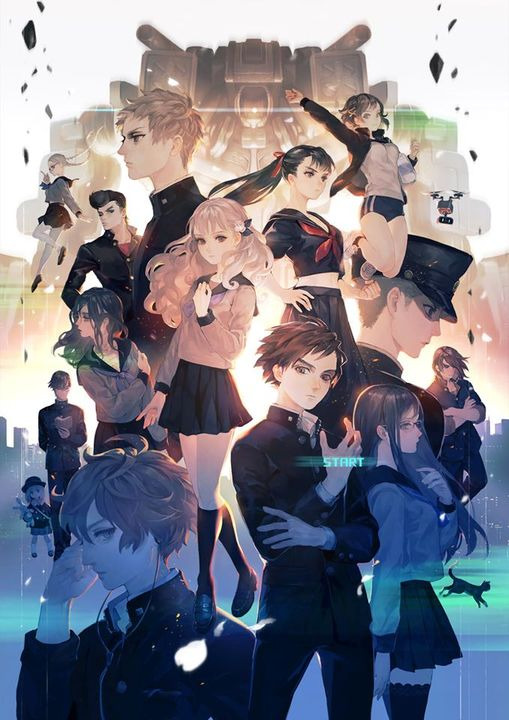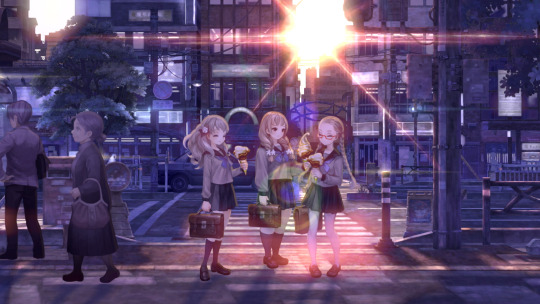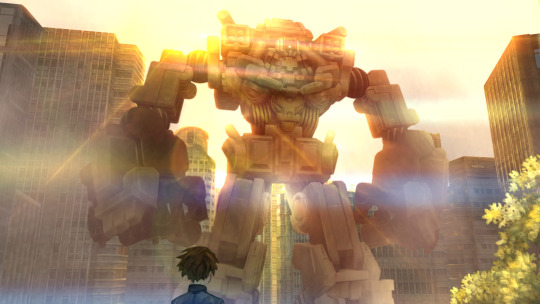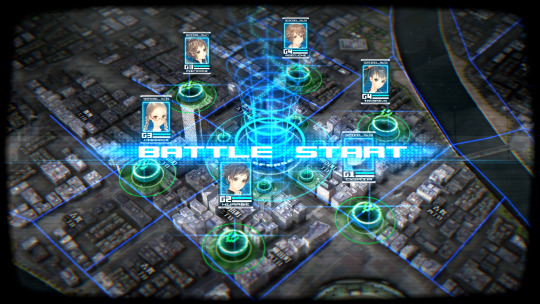#sega pay me for emotional damages
Explore tagged Tumblr posts
Text
if you're wondering how i'm taking mizu5


the answer is "badly"
#i feel really sick#idk i already explained my thoughts as best as i could on twt and i'm really upset and it all just kind of hurts rn idk if i can reiterate#four years of build-up right into a devastating cliffhanger that quite literally removes mizuki from the game's real world#and changes her menu sprites and voicelines#and of course the most pressing concerns were not really addressed#and it's just oging to be like this for at least a month#and after all this they're going to segue into akito5 vbs beach episode or whatever like ??????#FUCK YOUR STANDARD EVENT SCHEDULING. FINISH THIS MESS RN HOLY SHIT#i say mess i don't know if it's a Mess (BECAUSE IT'S A FUCKING CLIFFHANGER) it might still turn out well#but sitting with this is making me feeel fucking horrible i can't do it#i don't think i've ever experienced a media going from a source of comfort to a source of discomfort in the span of like 3 minutes#whiplash#i genuinely. hhhhhhhh I FEEL SICK AND THIS ISN'T A FUNNY HAHA JOKE#if i knew how to let myself cry i'd be crying a lot rn#sega pay me for emotional damages
13 notes
·
View notes
Text
13 Sentinels is a meandering, emotional mess of a science fiction story--that only just works

by Amr (@siegarettes)
13 Sentinels: Aegis Rim
Developer: Vanillaware
Publisher: Atlus, SEGA
PS4
Relentless in artistic and storytelling ambition, 13 Sentinels: Aegis Rim still comes off as lacking in confidence. It takes plenty of risks, and in presentation at least marches forward with a swagger that makes it clear Vanillaware knew how many people they could bring in purely on the promise of their incredible 2D artwork and its time-travel, mech centric premise, myself included. Yet by the time the credits roll on the game 13 Sentinels’ big ideas and ambitious remixes of the adventure game formula feel more like distractions than essential components of its storytelling.

At its heart, 13 Sentinels is a visual novel style adventure game, played from a sidescrolling perspective. In order to produce the absurd level of detail put into the 2D artwork, scenes and animations are constantly reused, restricting the story to only a few key locations that’ll become very familiar by the end of the game. It’s an intimate story that seems borne both of necessity and intention, trading detail for pure visual variety. Returning Vanillaware and visual novel fans will feel right at home here, while fans of more sprawling adventures might initially be surprised.
What it lacks in geographical scale it makes up temporal scale and its rapidly expanding cast. 13 Sentinels takes place across five different time periods, and, as you might have guessed from the name, tells the story through thirteen different protagonists. Stories jump around through points in time, with various time specific incarnations of each of them even making appearances.

It becomes complicated to track, especially given character storylines often leave out huge chunks of a timeline in order to let it be filled in during another character’s plot. One chapter might have you complete an objective, only for the next to take place far after the results of your actions, leaving you at a loss to what happened in the meantime. It’s convoluted to the point where the game offers a dedicated Analysis mode, where you can unlock glossary entries for characters and places, as well as put the game’s events into proper chronological order.
There’s an enjoyable puzzle box aspect to reconstructing what’s actually happening alongside the characters, but it doesn’t always pay off, particularly when you have to put one character’s story on hold to dip into other character stories, or the bothersome Destruction segments, which provide the “action” part of the game. Just over a third into the game however, I’d practically solved the puzzle box conspiracy beneath it, then spent about 20 more hours waiting for the reveals to occur within the story, and not exactly in a “dramatic irony” kind of way.
I was still plenty invested in the characters and their fates, and story progress is at least gated in a way that paces out the story well, but at this point the broken up plot structure was more getting in my way of seeing the story through than adding any real intrigue. Especially with so many character stories rewinding back progress to reiterate ideas already explored. It became little more than a distraction, one that betrayed Vanillaware’s confidence that they could sell the game on its story alone.

If the mystery box structure is a distraction, though, the Destruction segments are the equivalent of setting the next town over on fire. Attached to the main part of the game are pseudo-real time strategy sections. Action takes place over a short amount of time where you need to defend a specific point, with the game pausing to give you a moment whenever you choose commands. Up to six of the thirteen cast members can be operated during a mission, with the rest staying back to defend the point. Plenty of sub-systems and unit types are introduced during its runtime, but in the end it all boils down to rudimentary tower defense that isn’t particularly challenging for anyone with a basic understanding of the genre.
Destruction mode is flashy, inoffensive, and sometimes even fun, but it misses a trick by not integrating any of the incredible art seen during its main game into the action. Aside from character portraits and small, postage sized previews of each attack, Destruction mode takes place entirely within a cold tactical map view, with little more than small icons representing your characters and enemies. The sound and hit effects manage to still sell the impact of your moves, and there’s excitement in seeing so many missiles and explosions take place that they cause the frame rate to plummet, but without even animated cut-ins of the attacks, the action here really lacks the humanity and charm present in the rest of the game.

At the same time, the interface manages to be so visually busy that it becomes difficult to make out important information. I felt relieved that it never asked much of me, because the few times I did manage to fail it was because I lost important information in the noise, like the fact a certain enemy was shielding others, or even the fact that my character was taking damage.
Destruction mode in ultimately nothing more than a break from the story, and not always a welcome one. It gives of the feeling of something grafted on because Vanillaware felt they couldn’t hold their audience’s attention without some kind of action sequence. Honestly, aside from a few moments near the end, it rarely does anything to add to the story, and the few events that occur during its events are almost entirely disconnected from anything that happens within the main plot. Vanillaware struggles so hard to make this part compelling, they literally had to stop me from progressing the story by gating character progress behind it, and forcing me to unlock entries in the glossary with currency that can only be earned here. It could be cut entirely, vastly improving the pacing of the game as a whole.

Nothing makes it more clear how out of place it is than the prologue, which chops up segments of several characters’ plots, jumps between timelines and interrupts itself after each chapter with a Destruction segment that acts as a tutorial, making the narrative even more disjointed. I’d go so far towards saying that the prologue itself is the worst part of 13 Sentinels as a whole, condensing all its flaws into the weakest pitch for what eventually becomes a genuinely fantastic tale.
The prologue makes sure 13 Sentinels gets off on a weak start, and combined with its first steps treading immediately in well worn science fiction tropes, you’d be forgiven for not believing that Vanillaware won’t be able to pull it off. Time travel, terminators, kaiju and plenty of other in-universe homages to 80’s pop culture create a familiar atmosphere, getting you a little too comfortable in your assumptions before setting up a constantly unraveling thread of reveals. Shades of Koji Suzuki’s RING novels appear here, foreshadowing similar late story twists with a similar kind of investigative voice.
Through all its narrative experimentation, what ties it all together by the end is the cast itself. 13 Sentinels is ultimately a romantic tragedy about the ties made by a group of survivors. They change, develop, falter and even transcend time and consciousness, but they remain connected and can’t help returning as catalysts for each other. And like its characters, 13 Sentinels is often a mess, confused about what it wants to achieve, and not always able to express itself well. But it’s a heartfelt mess--a genuine one--and sometimes saying it with your heart means more than picking the perfect words.
4 notes
·
View notes
Photo

Women’s History Month Spotlight: Catt Small
Oh, yes! We have another Women’s History Month feature for you. Meet product designer, game developer, programmer, and artist, Catt Small (@letter-q). Catt is an original organizer for the Game Devs of Color Expo that highlights creators of color by showing off their games, creating and building conversation, and signal-boosting their reach. Oh, and—get ready—it’s in NYC this July if you want to attend in person. Want to learn more about Catt and her projects? Read on!
Tell us a little bit about yourself and how you got into the gaming industry.
I consider myself to be a creative technologist—I’m an artist who loves to learn and explore through the lens of code and other technology-centric resources. I started making games around the age of 10, which is when I learned how to build online dress up dolls using a random scripting language called FKiSS. I was gaming long before then, though; my mom and were playing SEGA Genesis games together when I was about 6 years old. I also have wonderful memories of board gaming with my parents. In other words, games have always been around me. They were just another part of my life.
Many people grew up with games, but games weren’t always accessible to build. I failed many times while trying to make more complex games as a teenager, which led to me tabling the subject. I began to try again in college when I stumbled upon other creative technologists at a university in Brooklyn (which I didn’t attend at the time). I contributed my art skills, and they showed me tools like Construct and Game Maker. I started attending games events, met more wonderful people, and the ball kept rolling from there.
Along with your other jobs and projects, you also organize the Game Devs of Color Expo. Can you talk more about that?
I started helping to organize the Game Devs of Color Expo in 2015. People of color have always been in the industry, but often feel marginalized and alone in game development spaces. I wanted to create a space in which game developers of color could feel more normal and, overall, be given the support necessary to thrive.
With much help from an awesome group of game developers and marketing specialists, the Game Devs of Color Expo has grown in scale beyond my wildest dreams. The event is open to all people, but specifically highlights amazing work by people of color. We’ve never had to worry about “lowering the bar,” a common concern I hear from well-meaning people who want their events to be more diverse. In fact, several people we’ve highlighted went on to win awards at larger games events. I’m so proud of what this event has become and am looking forward to the next one this July.
Your coming-of-age narrative game, SweetXheart, was recently released. How does it address race, gender, and microaggressions?
In SweetXheart (pronounced “sweetheart”), players act as Kara, a 19-year-old girl from the Bronx who attends an art college and interns at a tech company. Over five fictional days, players control how Kara deals with situations such as getting dressed, responding to catcallers, and navigating awkward friendship and family dynamics. Kara’s stress level is the core mechanic, and each choice the player makes has an effect. SweetXheart demonstrates the ways in which tiny interactions can make or break someone’s day. Microaggressions, which seem meaningless to all but the recipient, can cause serious emotional damage. Through tiny in-game interactions, players can see the ways in which multiple identities interact to create the anxiety that I (and others like me) manage on a daily basis. I’m proud of the result and the love the game has received—after all, I spent about five years on it!
In what ways can the gaming industry support women and marginalized communities move forward?
I’ve been glad to see the outpouring of support for disadvantaged people over the past several years. However, the support is often verbal. I want to see people receiving more financial support. Whether that be in the form of direct money through hired jobs, game sales, or recommendations for work and speaking engagement, the best way to help is to sponsor people who don’t have the same opportunities.
Even better, give marginalized people as many chances to fail as anyone else. In SweetXheart, Kara gets fired if she’s late to work two times. Her manager says the policy is in place so people understand the gravity of their actions. But unfortunately, this is an example of the stringency applied to certain people yet not others. We deserve as much mercy as anyone else—and the ability to be mediocre.
What projects should we expect next? And how can we support?
I will be making a game for an NYC-based Kickstarter project called WONDERVILLE. The game will be exclusive [to donaters], so please back the project if you’d like to play it! I am donating my time to the project since the company organizing it is a non-profit, but I have a Patreon if anyone out there is in a gifting mood. Funds help me pay other creative people to help me work on projects.
Thanks for the interview, Catt!
Want to see more like this, Tumblr? Stay tuned to @gaming all month long for more interviews with women and non-binary persons in the gaming industry. It’s a whole celebration.
80 notes
·
View notes
Text
Nintendo Switch income update, fee news and video games monitor
New Post has been published on https://pressography.org/nintendo-switch-income-update-fee-news-and-video-games-monitor/
Nintendo Switch income update, fee news and video games monitor
While the Switch faces a difficult marketplace, with the Xbox One and PS4 already firmly hooked up and providing a big library of titles, it seems Nintendo have observed a massive area of interest.
We already know that the console’s first weekend made it the quickest selling hardware for Nintendo in that historical length in many regions around the globe.
And now we additionally understand that astounding Nintendo Switch sales have continued into the console’s first week.
Nintendo of America president Reggie Fils-Aime confirmed as tons in a current interview with Katie Linendoll, revealing that the good times have rolled over to the first five days, at least inside the America.
“So now we’ve got records for America 5 days in, it continues to be the first-class-promoting gadget we’ve ever had within the America, and I’ve launched five systems now with Nintendo,” he revealed.
“And by means of far this is the most tremendous given the tempo of sales, given what’s happening at the software the front – obviously Legend of Zelda – so that is a super time for us.”
If that proves actual for other key areas, which includes Europe and Japan, it may suggest that the Nintendo Transfer will prove an actual winner for the business enterprise in the end.
While the Nintendo Switch income has a set goal of achieving 2m through the stop of March, it seems that outside analysts have been left inspired by its initial market effect.
So inspired in truth that some trust it can preserve its modern-day degrees and attain a massive milestone in little over a year.
IDC’s research director for gaming and VR/AR, Lewis Ward is one that has pegged the Nintendo Transfer income to hold to rise thru the end of first quarter-2018.
“Transfer is on target to deliver 2 million by way of the give up of March, so that is a solid start,” Ward informed CNBC. “I assume the Switch to promote a whole lot better in its first yr than Wii U, but fewer than Wii did in the same duration.
“Breath of the Wild is being heralded as one of the fine video games of the 12 months already. I believe that this Zelda release title is a key reason why first-week sales had been robust.”
The Nintendo Switch price on-line has additionally lifted to new heights, following the console becoming bought out at many retailers. At the same time as lovers within the United, kingdom has the risk to pre-buy at Amazon and Sport, there are presently few other alternatives to turn to.
however, they will also need to keep away from the only different choices open to them, that of paying over the percentages on online marketplaces. It seems that folks that had been fortunate enough to relax a Nintendo Transfer Pre-Order at the moment are eyeing the profit of selling it online.
cutting-edge fees variety from $350, all of the way up to the $700-mark. The better costs typically include a few Nintendo Switch video games included, despite the fact that they’re nevertheless way over the normal retail price of a console.
The Worst Three Xbox 360 games revealed
Let’s admit it we have all bought a few bad video games in our time, and I am no distinctive. fortunate sufficient for me even though corporations now send me video games to study which saves me money from purchasing garbage, hopefully, these days I can do the identical for you.
I don’t like to bash games due to the fact I realize that I might not like a Game wherein as a person else will clearly like it, but with the next few video games I plead all and sundry to live away from them due to the fact their without problems within the top 10 worst games ever produced for the Xbox 360.
Now those video games are in no order as they all suck similarly as terrible.
Jumper
Are you able to understand that film with that man who ought to teleport? Nope I failed to assume you will and the game is similarly as bad because the film. Clearly I tell a lie, the sport is one hundred instances worse than the film and if you ever get the risk to play it or buy it then don’t, without a doubt take the sport throw it on the floor and stamp on it. After you have stamped on it you could need to tip petrol on top and light it on fireplace and the stamp on it a few greater.
Now you may be wondering is it really that awful, and perhaps I’ve over exaggerated a tiny bit however basically all of what I have said is actual. Jumper became without delay ported from a lesser device onto the Xbox 360, typically while this occurs the manufacturer takes a piece of time to make the sport look a touch better. In this example they could not have cared less. the sport had the equal unpleasant graphics that become produced at the PS2 and had similarly as surprising Gameplay to go with it.
Sonic the Hedgehog
It actually pains me to feature sonic to this listing, however while sonic made the bounce to the Xbox 360 it become as though Sega forgot why Sonic appealed to its target audience within the first area. Sonic now not had the capacity to run super fast, instead Sonic felt extra like an senior citizen suffering from arthritis. Sega additionally kicked the little man whilst he become down and added more characters that the game really did not want.
The spiky-haired hedgehog wasn’t ultimately defeated by way of DR Robotnik but ended up dropping to sucky camera angles, awful controls and downright terrible Gameplay.
NASCAR 08
Unlike Sonic I haven’t any terrible emotions whilst it comes to tearing into Nascar 08 as EA games absolutely destroyed the game so much that I’d rather be stabbed, shot and mugged instead of race any other lap. The complete factor of NASCAR racing is to take our favorite drivers and speed around the music as speedy because it’s humanly viable. EA games however had other ideas and desired to make driving a NASCAR car impossible to address and from the 2nd lap onwards they decided to make all cars pull to the left irrespective of automobile damage.
0 notes